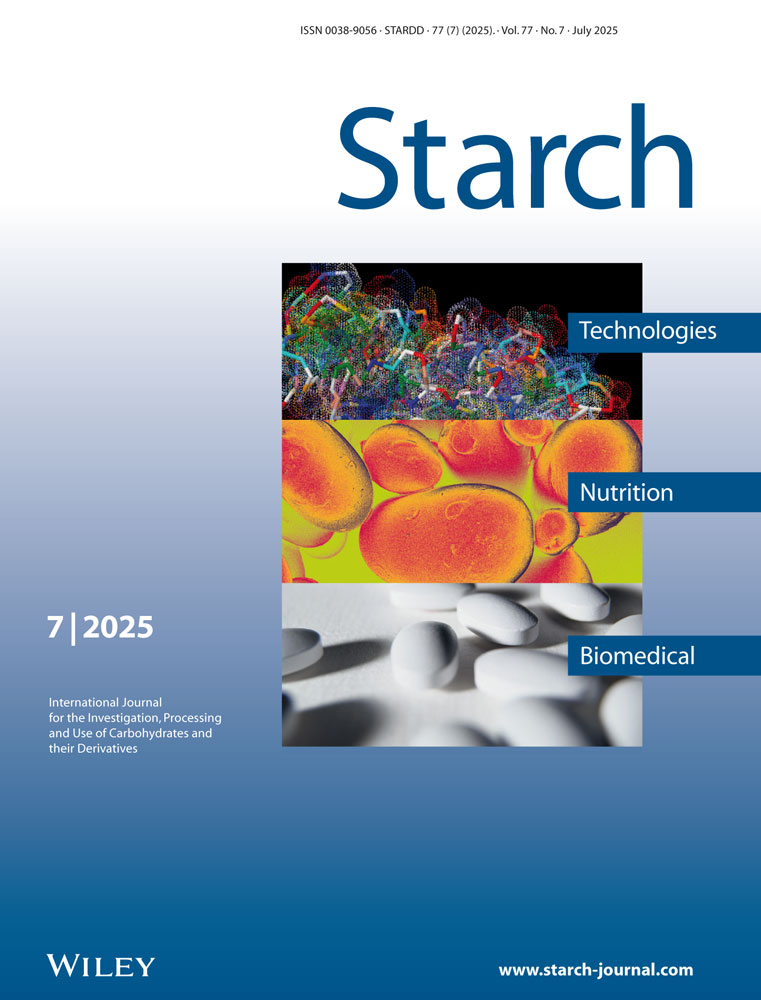Nature of Starch Crystallinity in Parboiled Rice
Abstract
enA-type X-ray diffraction spectra of raw rice was weakened upon mild parboiling and completely disappeared in moderately severe parboiled rice. A feeble V pattern of lipid-amylose complex appeared in its place. There was no unambiguous evidence of a B-type spectra of retrograded starch, although partial and weak B-like spectra could be seen. Differential scanning calorimetry showed that raw rice flour and starch had a large gelatinization and a small lipid-amylose endotherm, the latter disappearing after defatting. The gelatinization endotherm first decreased and eventually disappeared in samples with moderately severe parboiling, but a small lipid-amylose endotherm was visible in most parboiled rice samples. On the whole, parboiled rice appeared largely amorphous with only minor crystallinity, and the peculiar properties of parboiled rice could not be definitely ascribed to a definite crystalline form of starch.
Abstract
deDie Natur der Stärkekristallinität in „parboiled”︁ Reis. Das A-Typ-Röntgenbeugungsspektrum von Rohreis wurde bei milder hydrothermischer Behandlung (parboiling) abgeschwächt und verschwand voll-kommen bei mäßig starker Behandlung. An seiner Stelle erschien ein schwaches V-Muster des Lipid-Amylose-Komplexes. Ein B-Typ-Spektrum von retrogradierter Stärke war nicht zweifelsfrei erkennbar, obgleich ein teilweises und schwaches B-ähnliches Spektrum zu sehen war. Differential-Raster-Calorimetrie zeigte, daß Rohreismehl und -stärke eine starke Verkleisterungs- und eine kleine Lipid-Amylose-Endotherme hatten; letztere verschwand nach dem Entfetten. Die Verkleisterungs-Endotherme verringerte sich zuerst und verschwand gegebenenfalls in Proben bei mäßig schwerer hydrothermischer Behandlung. In den meisten parboiled Reisproben bleibt eine kleine Lipid-Amylose-Endotherme sichtbar. Insgesamt erschien parboiled Reis weitgehend amorph mit nur geringer Kristallinität, und seine typischen Eigenschaften konnten nicht genau einer definitiven kristallinen Form der Stärke zugeschrieben werden.




